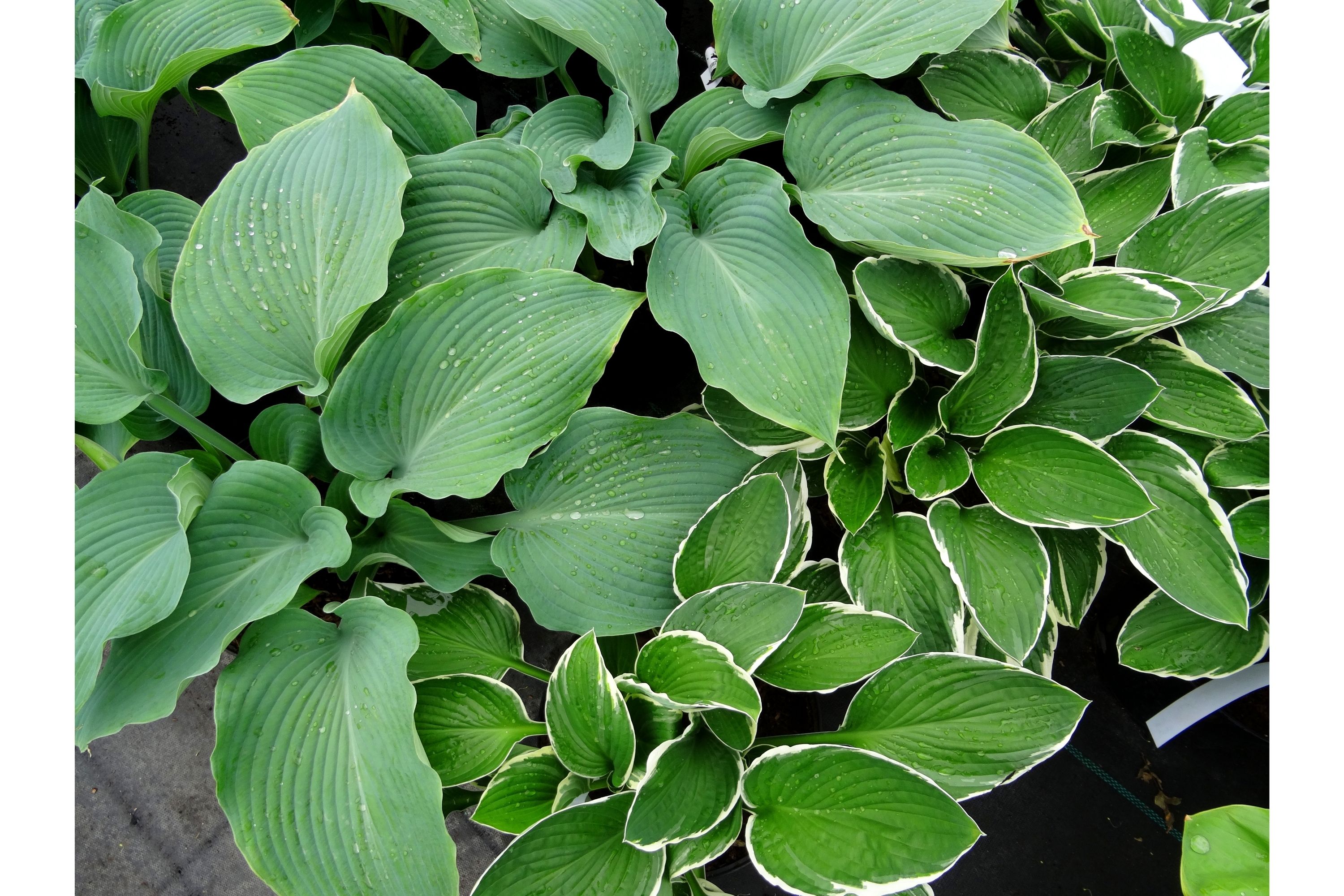Hosta Halcyon
(Hosta Halcyon)

Description
Hostas are herbaceous perennial plants, growing from rhizomes or stolons, with broad lanceolate or ovate leaves varying widely in size by species from 1–18 in (3–45 cm) long and 0.75–12 in (2–30 cm) broad. The smallest varieties are called miniatures. Variation among the numerous cultivars is even greater, with clumps ranging from less than four in (10 cm) across and three in (8 cm) high to more than six ft (200 cm) across and four ft (130 cm) high. Leaf color in wild species is typically green, although some species (e.g., H. sieboldiana) are known for a glaucous waxy leaf coating that gives a blue appearance to the leaf. Some species have a glaucous white coating covering the underside of the leaves. Natural mutations of native species are known with yellow-green ("gold") colored leaves or with leaf variegation (either white/cream or yellowish edges or centers). Variegated plants very often give rise to sports that are the result of the reshuffling of cell layers during bud formation, producing foliage with mixed pigment sections. In seedlings variegation is generally maternally derived by chloroplast transfer and is not a genetically inheritable trait. The flowers of hosta are produced on upright scapes that are woody and remain on the plant throughout winter, they are generally taller than the leaf mound, and end in terminal racemes. The individual flowers are usually pendulous, 0.75–2 in (2–5 cm) long, with six tepals, white, lavender, or violet in color and usually scentless. The only strongly fragrant species is Hosta plantaginea, which has white flowers up to four in (10 cm) long; it is also unusual in that the flowers open in the evening and close by morning. This species blooms in late summer and is sometimes known as "August Lily". Taxonomists differ on the number of Hosta species; there may be as many as 45. Accordingly, the list of species given here may be taken loosely. The genus may be broadly divided into three subgenera. Interspecific hybridization occurs since all the species have the same chromosome number (2n = 2x = 60); except H. ventricosa which is a natural tetraploid that sets seed through apomixis. Many cultivated hostas formerly described as species have been reduced to cultivars; these often have their names conserved, and retain Latinized names which resemble species names (e.g., Hosta 'Fortunei').
Taxonomic tree:







